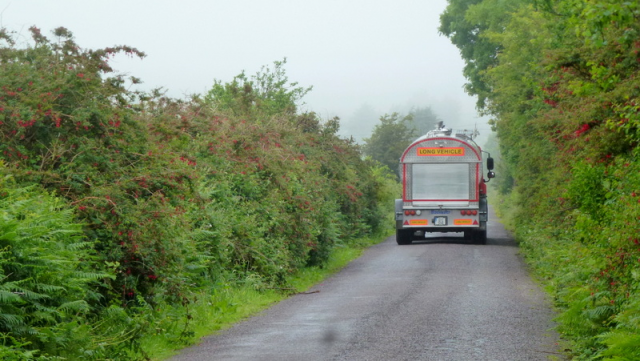The agri-food sector is a significant one for the economy and employment in Northern Ireland. For a number of reasons, the implications of the vote to leave the EU are difficult to gauge at this stage, but this article attempts to sketch out some of the potential impacts.

Extensive body of legislation
The EU’s legislative impact on agriculture is extensive. There are currently 2,751 pieces of legislation in force, consisting of primary legislation (treaties and protocols) and secondary legislation (regulations, directives and court decisions). These cover areas such as CAP and its operation; rural development; forestry; and animal health and welfare.
In terms of food and drink processing, EU legislation covers areas such as food traceability and labelling, additives, and food standards. It is possible that a UK withdrawal from the EU could see a potential reduction in the types and level of regulation that local food and drink processors face, but whether this happens in practice will depend on the relationship that the UK negotiates with the EU and whether access to the European Single Market is achieved, and on what terms.
Direct payments to farmers
Based on 2014-15 data, average ‘as due’ direct payments represented 103% of the value of average total Farm Business Income within Northern Ireland. The income shock of removal of direct support could see a significant drop in the number of farmers and could also have a wider impact on the rural economy. A drop in the number of farmers could, theoretically, benefit those who managed to continue to operate as prices might rise for certain produce and farms might be able to expand if land became cheaper to obtain. There are uncertainties about whether the UK Government will continue to provide direct support to farmers. For example, could support instead be provided in an indirect way, focused on areas such as risk management (e.g. farm insurance and export subsidies)?
Agri-environment schemes
Under Pillar II (Rural Development Programmes) of the Common Agricultural Policy 2014-20, EU Member States and regions have options for funding to protect the rural environment. The 2014-20 Northern Ireland Rural Development Programme (NIRDP) has allocated significant sums of money towards a number of agri-environment measures including:
- €194 million allocated to agri-environment climate measures;
- €79 million allocated to support for areas facing natural constraints (ANC).
Any changes to the budget or priorities within the NIRDP 2014-20 have the potential for negative impacts on the local environment. The potential loss of the ANC payment, for example, could have a drastic impact on our upland environment as a result of land dereliction or a reduction in the cross-compliance benefits in areas such as soil protection and erosion prevention. Environmental stakeholder organisations have raised concerns about the impacts that a removal of funding would have on projects that have benefitted various habitats and species. If there is a continuation of rural development funding after a UK withdrawal from the EU, would agri-environment schemes continue to be a priority for the government, and would any such decision be devolved?
Animal and plant disease
A group of EU directives and regulations deal with animal and plant disease, including issues such as prevention, notification, surveillance, diagnostic approaches, control and eradication. Member States can also avail of financial assistance from the EU in order to tackle, or to research, animal and plant diseases. For example, UK Bovine TB Eradication and Control programmes have received £23m in EU co-financing this year. Could loss of this funding make control and eradication of disease more difficult? What impacts could non-compliance with EU requirements on plant and animal disease control have on our ability to access EU or wider world markets in relation to agricultural produce?
Exports and imports
The European Single Market enables goods to move freely within the EU without being subject to tariffs, quotas, duties or customs delays. Agriculture in Northern Ireland benefits from this arrangement in terms of imports and exports, with the movement of goods across the Irish border of particular significance. For example, in 2015, 594 million litres of milk were imported into the Republic of Ireland for processing by creameries and pasteurisers, with nearly all of this coming from Northern Ireland. This imported milk is equivalent to 26% of Northern Ireland’s annual milk supply in 2015. Any change to the current single market arrangements could have a significant impact on the movement of agricultural products.
The nature of any such impacts will largely depend on the deal that emerges from the forthcoming negotiations between the UK and EU. While it is difficult at this stage to predict the nature of any deal with the EU, there is information available on the types of tariffs that various products would be subject to if the UK resorted to World Trade Organisation terms for trade with the EU. In such circumstances, agricultural exports from Northern Ireland to EU countries could face tariffs such as:
- Dairy products – 42.1%;
- Fruit, vegetables, plants – 10.9%;
- Live animals – 1.2%; and,
- Meat and edible meat offal – 5.2%.
However, it should be recognised that within these broad categories there is considerable variation in tariff levels, as indicated by the fact that the entire WTO tariff data set shows 6,526 tariff lines. Given the complexity and variation in the tariffs it is difficult at this stage to assess the full impacts on local agriculture.
Protection of local food
The EU has legislation for the protection of food names based upon either their geographical point of origin, particular recipe or other uniquely distinctive features. These protections mean that they cannot be copied throughout the EU. Registered products also benefit from an ability to draw attention to their product and its unique properties across the EU, which can be a major marketing and sales benefit. At present, Northern Ireland has three PGI approved products: Comber early potatoes, Lough Neagh eels and Armagh Bramley apples. Three more local products are also currently seeking protected status. What is the likelihood of UK protected food products continuing to receive this protection and marketing potential post Brexit?
Rural development funding
Under Pillar II (Rural Development Programmes) of the Common Agricultural Policy 2014-20, EU Member States and regions have options for funding to make farming more efficient. Within Northern Ireland the 2014-20 NIRDP has allocated approximately £261m towards a number of schemes designed to support the efficiency and competiveness of the agri-food sector. The role of the NIRDP here can be pivotal, particularly in providing farmers with investment and support at a time when securing private finance may be challenging. Will the UK government decide to continue to fund Rural Development across the UK? Would this be a national programme or devolved?
Genetically Modified Organisms
The EU has a legal framework dealing with the risk assessment, licensing, cultivation, labelling and traceability of Genetically Modified Organisms (GMOs). Use of GMOs within the EU is strictly limited at present, but following a withdrawal from the EU, would the UK and Northern Ireland take the opportunity to speed up or expand the process for use of GMOs, or alternatively move away from the concept altogether? What is the Northern Ireland Executive’s position on the use and cultivation of GMOs within Northern Ireland? Would the cultivation of GMOs be particularly contentious given the land border with the Republic of Ireland?
Agricultural research and development
Agriculture, forestry, fisheries and aquaculture are included as subjects eligible for funding under the Horizon 2020 programme. Loss of access to Horizon 2020 funding could have a detrimental impact on both local agricultural research and the adoption of new approaches or improved processes by local farmers. For example, the Agri-Food Bioscience Institute (AFBI) had an EU-derived income of £2.58m in 2013/14, which equated to 14% of their total income for the year. The loss or reduction of this income stream could present challenges for the Institute and the work that it does to contribute to local agriculture.
Access to labour
Any changes to the availability of migrant labour for Northern Ireland’s agricultural and food processing sectors could potentially present significant challenges. While it would appear that there has been a reliance on migrant labour to meet some of the demand for harvesting labour in particular, it should be noted that there is little statistical data to confirm the scale of this contribution. In terms of food processing, Dunbia, one of Northern Ireland’s major meat processors, has previously estimated that of the 1,240 people it employs in Northern Ireland around 60% at operative level are migrant workers. A more recent UK-wide report looking at the food manufacturing workforce identified 26.9% as being EU migrants. There could theoretically be a risk that food processing operators will move south of the border, particularly given that there is already significant cross-border movement in agricultural produce, which constitutes the raw material for many of our food and drink processors.
The Assembly Research and Information Service has recently produced a longer research paper on this issue for the Committee for Agriculture, Environment and Rural Affairs, as well as a paper which examined some of the alternative models to EU membership.
